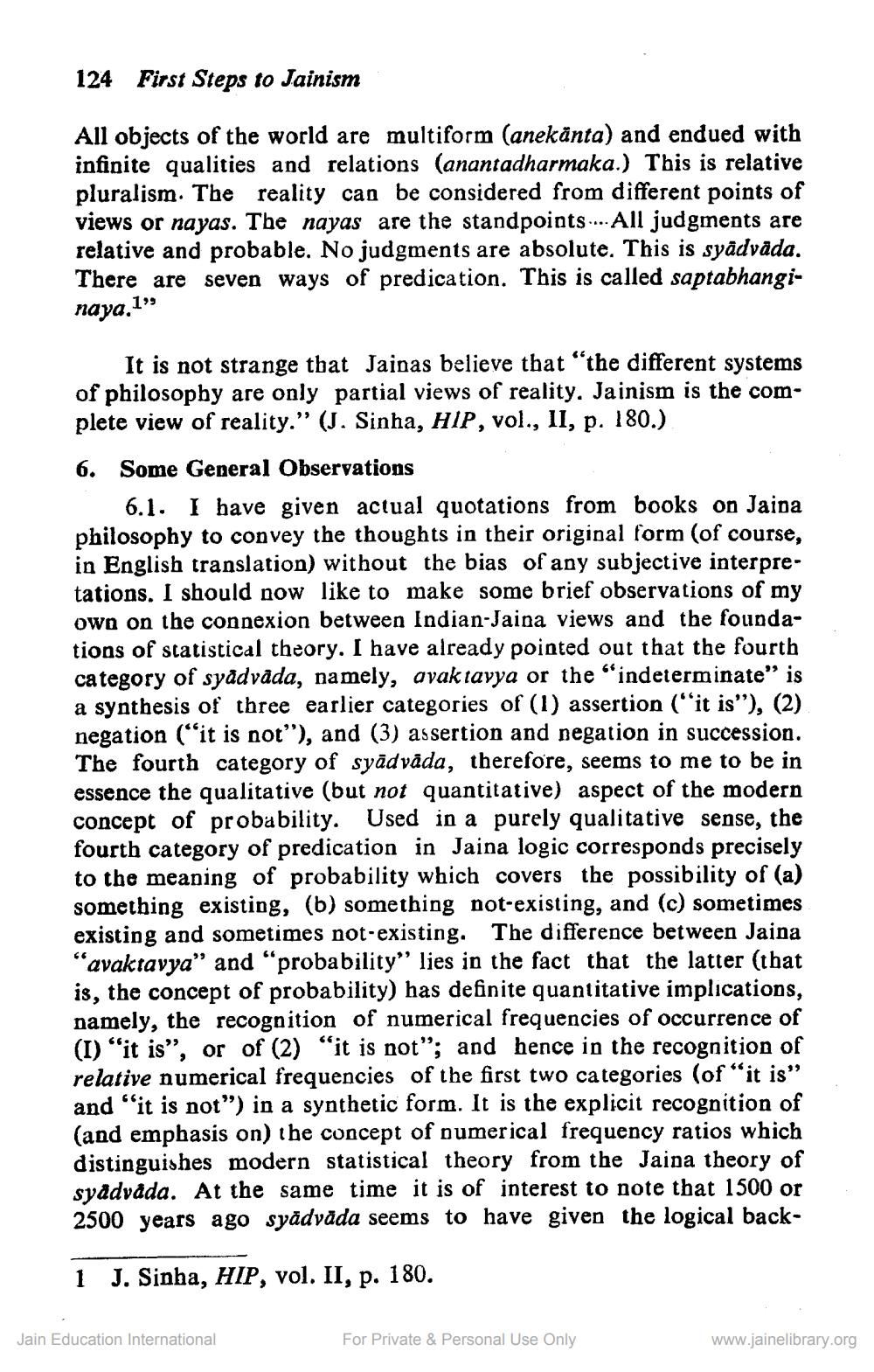________________
124 First Steps to Jainism
All objects of the world are multiform (anekanta) and endued with infinite qualities and relations (anantadharmaka.) This is relative pluralism. The reality can be considered from different points of views or nayas. The nayas are the standpoints... All judgments are relative and probable. No judgments are absolute. This is syādvāda. There are seven ways of predication. This is called saptabhangi
199
naya.
It is not strange that Jainas believe that "the different systems of philosophy are only partial views of reality. Jainism is the complete view of reality." (J. Sinha, HIP, vol., II, p. 180.)
6. Some General Observations
6.1. I have given actual quotations from books on Jaina philosophy to convey the thoughts in their original form (of course, in English translation) without the bias of any subjective interpretations. I should now like to make some brief observations of my own on the connexion between Indian-Jaina views and the foundations of statistical theory. I have already pointed out that the fourth category of syādvāda, namely, avak tavya or the "indeterminate" is a synthesis of three earlier categories of (1) assertion ("it is"), (2) negation ("it is not"), and (3) assertion and negation in succession. The fourth category of syādväāda, therefore, seems to me to be in essence the qualitative (but not quantitative) aspect of the modern concept of probability. Used in a purely qualitative sense, the fourth category of predication in Jaina logic corresponds precisely to the meaning of probability which covers the possibility of (a) something existing, (b) something not-existing, and (c) sometimes existing and sometimes not-existing. The difference between Jaina "avaktavya" and "probability" lies in the fact that the latter (that is, the concept of probability) has definite quantitative implications, namely, the recognition of numerical frequencies of occurrence of (I) "it is", or of (2) "it is not"; and hence in the recognition of relative numerical frequencies of the first two categories (of "it is" and "it is not") in a synthetic form. It is the explicit recognition of (and emphasis on) the concept of numerical frequency ratios which distinguishes modern statistical theory from the Jaina theory of syädvåda. At the same time it is of interest to note that 1500 or 2500 years ago syādvāda seems to have given the logical back
1
J. Sinha, HIP, vol. II, p. 180.
Jain Education International
For Private & Personal Use Only
www.jainelibrary.org




